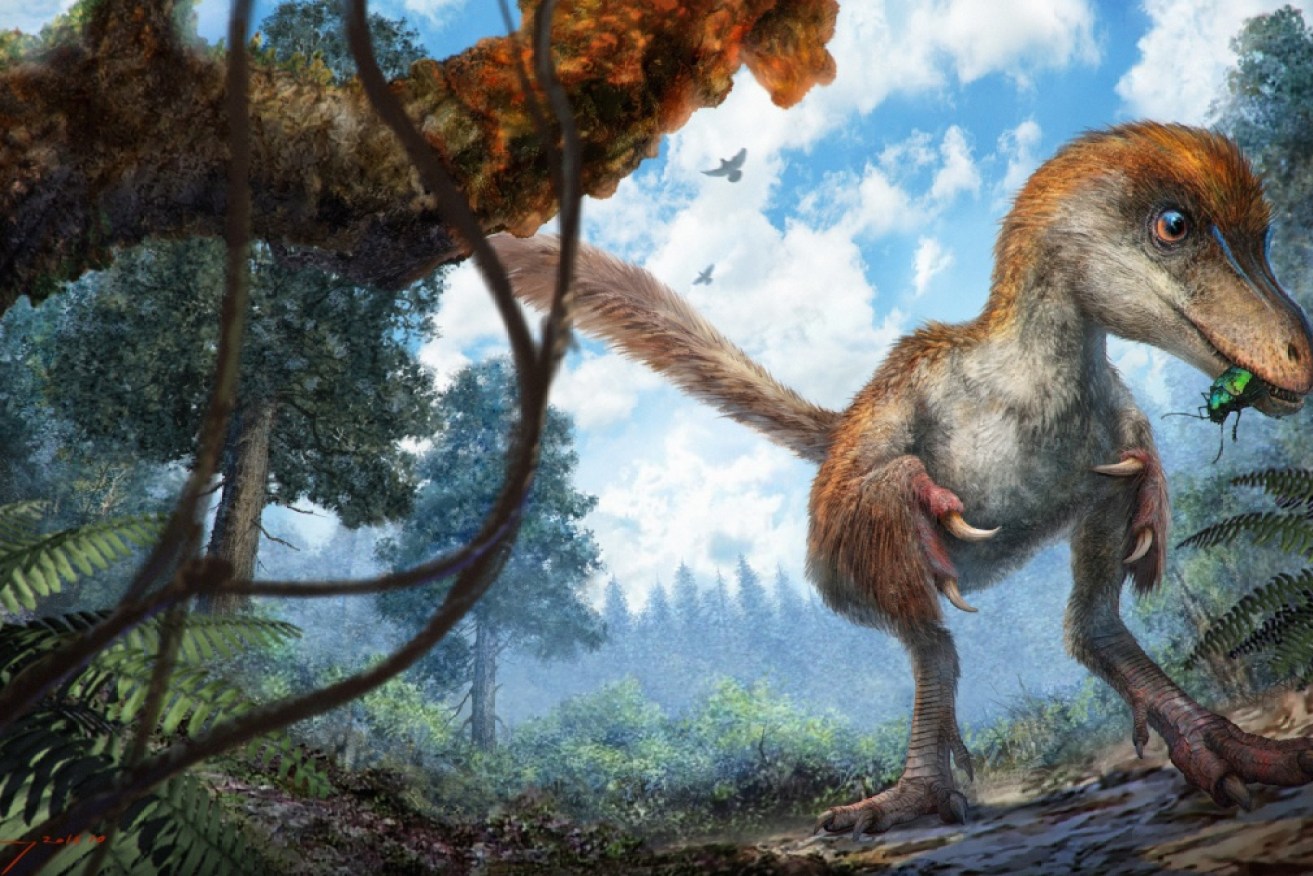The great dinosaur debate: Feathers or scales?


A new discovery suggests dinosaurs may have looked more like birds than we first thought. Photo: Cheung Chung-tat
The discovery of dinosaur feathers in an ancient chunk of amber is just the latest piece of evidence showing the evolutionary link between modern birds and prehistoric creatures, scientists say.
Traditionally, dinosaurs were portrayed as beasts with near-impenetrable scaly or leathery skin, but recent fossil discoveries including soft tissue remnants and other non-bony material suggest some species may have had a more a feathery, bird-like appearance
In a new study published in the science journal Current Biology, an international team of researchers has detailed the discovery of a feathered dinosaur tail, perfectly preserved in amber for almost 100 million years.
The 3.6 centimetre-long translucent piece of amber, which is hardened tree resin, was discovered by the paper’s first author Lida Xing from China University of Geosciences in Beijing, who stumbled upon the prehistoric treasure at an amber market in Myitkyina, Myanmar last year.
CT scans and microscopic observations of the specimen, which has been named DIP-V-15103, revealed eight vertebrae surrounded by feathers and is thought to belong to a flightless theropod species from the mid-Cretaceous period around 99 million years ago.

An illustration of that the flightless theropod species may have looked like. Photo: Cheung Chung-tat and Liu Yi
“We can be sure of the source because the vertebrae are not fused into a rod or pygostyle as in modern birds and their closest relatives,” says co-author Ryan McKellar from the Royal Saskatchewan Museum in Canada.
“Instead, the tail is long and flexible, with keels of feathers running down each side.”
Analysis of the feathers suggests the tail had a chestnut-brown upper surface and a pale underside, and the lack of a well-developed central shaft, or rachis, means the species was not suited for flight.
The scientists say the species comes from a subgroup of theropods called Coelurosauria, which included the Tyrannosaurus rex – these dinosaurs are closely related to modern birds and are all thought to have been feathered.
The same team of researchers also detailed the discovery of two tiny, feathered dinosaur wings in amber in a paper published in June, which they believe belonged to another group of theropods known as Enantionithes.
Dr Stephen Poropat from the Australian Age of Dinosaurs Museum of National History in Winton, Queensland, thinks the researchers were correct in saying this was a flightless dinosaur.
“These [feathers] in this amber dinosaur would not be very aerodynamic, they wouldn’t sit against the body flush like those of birds,” Dr Poropat told The New Daily.
He says the “spectacular” specimen contains a wealth of information that reinforces our understanding of the evolutionary relationship between modern birds and their dinosaur ancestors.
“It is one that will hopefully provide us with more detail about the soft tissue anatomy under the feathers as well,” he says.

The amber specimen. Photo: Supplied
Although it is not the first time feathers have been found in amber, it is one of the best-preserved specimens and underlines the importance of amber in supporting the fossil record.
For example, chemical analysis of the soft tissue layer surrounding the bones shows revealed traces of ferrous iron left over from the blood pigment haemoglobin, which means other chemical compounds such as skin pigments could be preserved in yet-to-be discovered amber samples.
“Amber pieces preserve tiny snapshots of ancient ecosystems, but they record microscopic details, three-dimensional arrangements, and labile tissues that are difficult to study in other settings,” says McKellar.
Last year, palaeontologists discovered fossilised tail feathers and soft tissue belonging to an ostrich-like dinosaur called Ornithomimus, which lived approximately 76 to 65 million years ago and would have stood around 1.8 to 2.4 metres tall.








